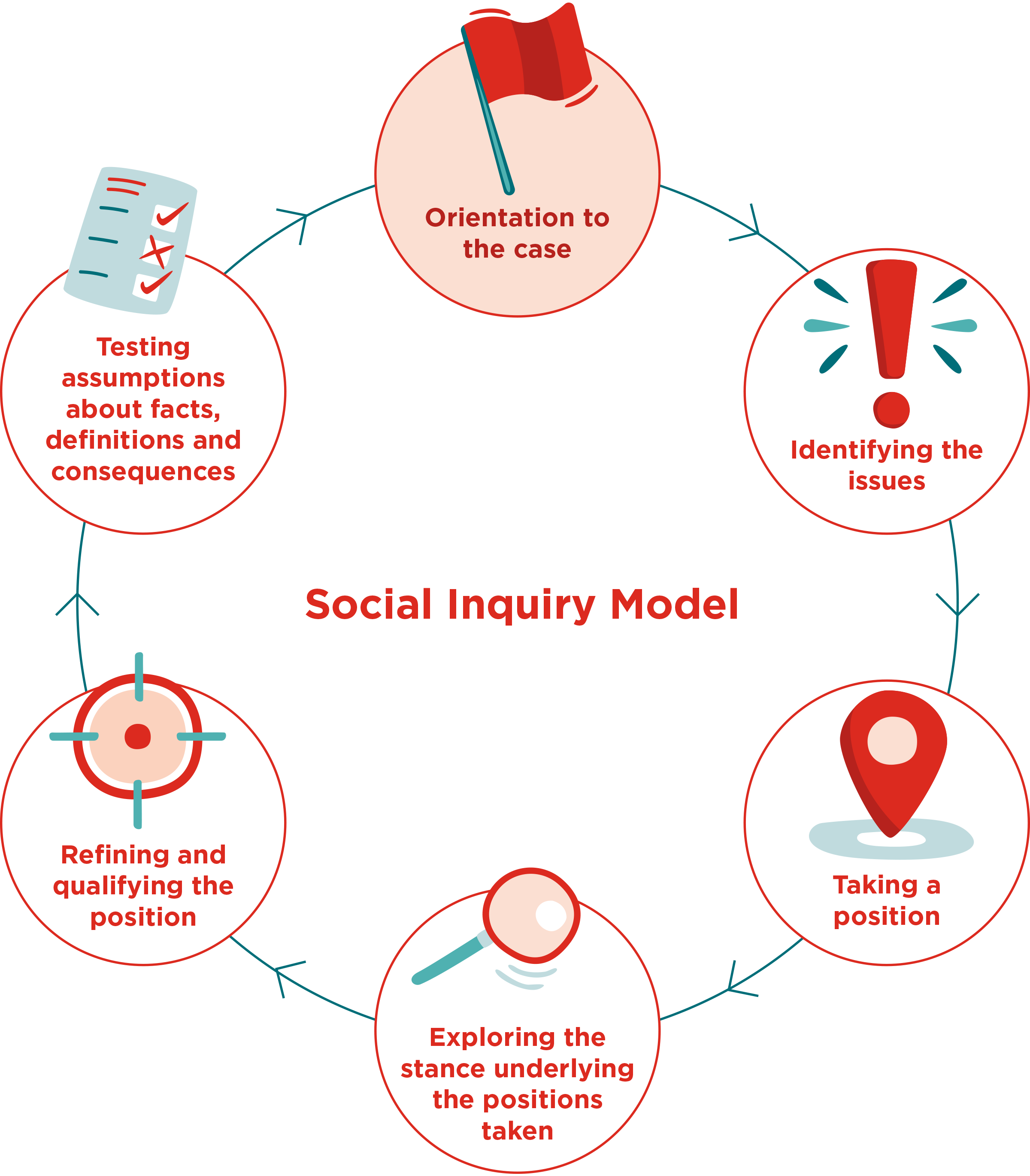The social inquiry model
The social inquiry model helps ākonga to think systematically about issues in health and physical education by encouraging recognition of their own values and attitudes about issues, and the analysis of alternative positions.
